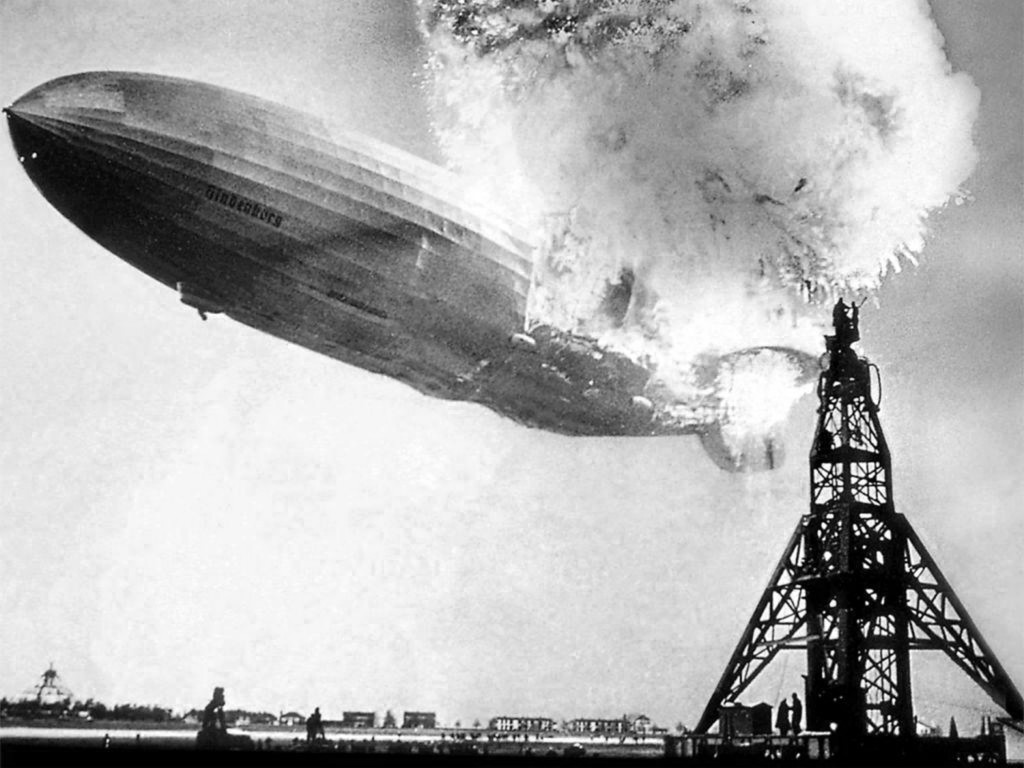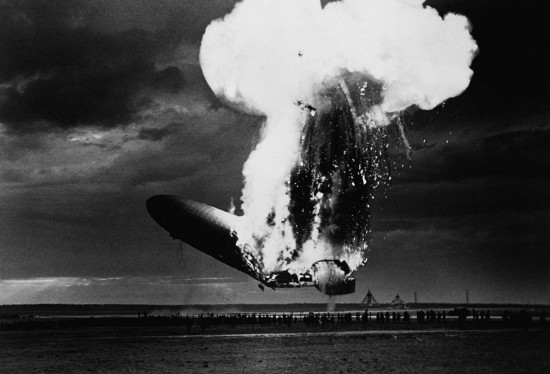The Hindenburg was a hydrogen-filled dirigible used for passenger travel. It was close to the size of three football fields, 245 meters (804 ft) long and 41 meters (135 ft) in diameter and carried over 100 passengers and crew. Its explosion on May 6, 1937 ended any further plans to use its design for transport. 35 died, 62 passengers and crew survived.
There had been other problems with dirigibles but this one was caught on film.
Explanations of the fire varies and much attention has been paid to the ship's covering. But most believe the covering of the ship was only incidental. One good explanation involves the ship's discharge mechanism. Pure hydrogen will not ignite. But if any air is mixed with hydrogen it will explode. The ship's hydrogen was discharged into an air shaft. When the forward speed was good, the duct was sucked clean. But when the airship was coming in for a landing and the speed was reduced, the hydrogen-air mixture was retained in the exhaust duct. If ignited it would explode and/or burn. The sound of an explosion was heard by many people on the airship before the fire. It is likely this explosion occurred in the exhaust duct and ripped the adjoining gas bags, destroyed the integrity of the gas bags and exposed the gas. But the explosion, the prime ignition event, has never been explained.
The painted skin did play one role in the disaster: It gave the fire its spectacular orange color. (Hydrogen burns with an invisible flame.) There was an effort later to build dirigibles using inert helium but it was very expensive and the effort failed.


There had been other problems with dirigibles but this one was caught on film.
Explanations of the fire varies and much attention has been paid to the ship's covering. But most believe the covering of the ship was only incidental. One good explanation involves the ship's discharge mechanism. Pure hydrogen will not ignite. But if any air is mixed with hydrogen it will explode. The ship's hydrogen was discharged into an air shaft. When the forward speed was good, the duct was sucked clean. But when the airship was coming in for a landing and the speed was reduced, the hydrogen-air mixture was retained in the exhaust duct. If ignited it would explode and/or burn. The sound of an explosion was heard by many people on the airship before the fire. It is likely this explosion occurred in the exhaust duct and ripped the adjoining gas bags, destroyed the integrity of the gas bags and exposed the gas. But the explosion, the prime ignition event, has never been explained.
The painted skin did play one role in the disaster: It gave the fire its spectacular orange color. (Hydrogen burns with an invisible flame.) There was an effort later to build dirigibles using inert helium but it was very expensive and the effort failed.


No comments:
Post a Comment